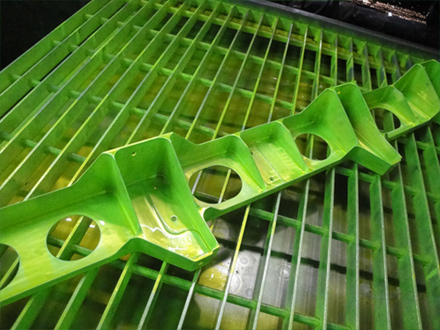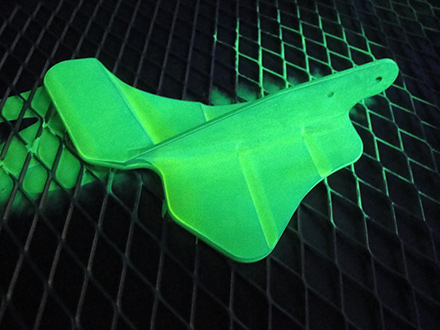Fluorescent Dye Penetrant Inspection (DPI)


Surface cracks that glow in the dark
Non Destructive Testing (NDT) is the name given to any form of testing or inspection that can verify the structural integrity of a component without compromising its ability to perform in service. Dye Penetrant Inspection (DPI) is probably the most widely used NDT method. The test object or material is first thoroughly cleaned. If the component under examination is not adequately pre-cleaned, and contaminants remain on the surface of the test part, the penetrant inspection medium will not have an opportunity to enter the flaw. The part is then coated with a visible or fluorescent dye solution. After a pre-selected time interval (dwell time), the excess dye is removed from the surface, and a developer is applied. The developer acts like a blotter and draws penetrant out of imperfections which are open to the surface. With visible dyes, the vivid color contrast between the penetrant and the developer makes the “bleed-out” easy to see. With fluorescent dyes, an ultraviolet lamp is used to make the “bleed-out” fluoresce brightly, thus allowing the imperfection to be seen readily.
Supercraft carries out two types of dye penetrant inspection:
Water Washable - The penetrant has a built-in emulsifying agent allowing it to be easily washed off with a coarse water spray and is ideal for testing of castings, welds & sheet metal components.
Post-Emulsified Hydrophilic - In contrast to water washable DPI, the water-soluble emulsifier, similar to a detergent, is applied to the part’s surface after the penetrant dwell time has elapsed. This process is also similar to oil based lipophilic DPI, except where an oil based lipophilic emulsifier can only be applied by dipping or pouring, the hydrophilic emulsifier, may be applied by dipping, pouring or spraying. The post-emulsified hydrophilic process is highly penetrating and will show defects on fine surfaces, however it is not so suitable for rough surfaces as the emulsifier is more difficult to clean. Also, the longer a developer agent stays on a part the more difficult it is to take off. For this reason it is common practice to fully post clean the part as soon as possible after completion of the fluorescent penetrant inspection.
« News and Features
